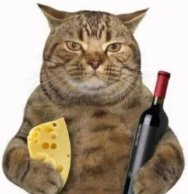-
Публикаций
89 -
Зарегистрирован
-
Посещение
-

Сложные эфиры в синтетических смазках. Вопросы к TomNJ
TomNJ ответил в теме пользователя Ё}I{ИК в Моторные масла ОБЩАЯ
POE type esters have fewer methylene hydrogens than hydrocarbons and are therefore more oxidatively stable. How long break down takes depends on the temperature and oxygen contact, but POEs should last longer in an oxidative environment than hydrocarbons, including PAO. Also esters can dissolve much more anti-oxidant additives than PAO, if the formulator chooses to do so. When formulating ester based industrial oils I typically used 3 to 5 times as much anti-oxidants than PAO oils. Like with hydrocarbons, oxidation can cause ester oils to thicken and can generate corrosive by-pr -

Сложные эфиры в синтетических смазках. Вопросы к TomNJ
TomNJ ответил в теме пользователя Ё}I{ИК в Моторные масла ОБЩАЯ
I have two vehicles that only see about 2000 miles per year each, and I change the oil in these vehicles every two years. I believe this is safe provided the car is taken on some long trips (over 20 miles) every month or two to bring the oil up to temperature and burn off gas and water. -

Сложные эфиры в синтетических смазках. Вопросы к TomNJ
TomNJ ответил в теме пользователя Ё}I{ИК в Моторные масла ОБЩАЯ
Hi, I’ll try to help. 1. Since I am retired 15 years I never formulated with AN. I would expect it to have some polarity due to the aromatic rings in the chemical structure, and the fact that it swells seals, but not as polar as most POEs. Plus I have seen coking test data on ANs that are cleaner than PAO or Group IIIs, and this is likely due to it solubilizing break down products. 2. Since I have not formulated with ANs this is difficult to answer. The physical properties you show in your table are very similar. ANs have a low VI and should onl -

Сложные эфиры в синтетических смазках. Вопросы к TomNJ
TomNJ ответил в теме пользователя Ё}I{ИК в Моторные масла ОБЩАЯ
I never formulated with Dioctyl Terephthalate. We did use some ortho phthalates such as DIDP and DTDP in air compressor lubricants, but in general the phthalate family due to the aromatic ring suffered from low VI, high pour point, and lack of biodegradability compared to our other ester choices. Terephthalates should have a higher VI and may be more suitable in synthetic lubricants than ortho phthalate esters.- 167 ответов
-
12
-

Сложные эфиры в синтетических смазках. Вопросы к TomNJ
TomNJ ответил в теме пользователя Ё}I{ИК в Моторные масла ОБЩАЯ
Personally I would not do so. POE jet turbine engine oils are not designed for automatic transmissions or to blend with ATFs, so there is some risk, such as incompatibility with additives or seals and changes to frictional properties. While the risk may be small with small percentages, I have not seen any test results or other data that suggest a benefit to justify the risk. -

Сложные эфиры в синтетических смазках. Вопросы к TomNJ
TomNJ ответил в теме пользователя Ё}I{ИК в Моторные масла ОБЩАЯ
The Nyco turbine oil will look much the same as the Mobil Jet II in analysis since they both meet MIL-PRF-23699 specification. There are no metals and only phosphorus will be shown. I am certain this oil contains a phosphate anti-wear additive but do not know if it is TCP or another variant. Likely TCP given the age of the formulation, but I do not know for sure. -

Скидываемся на лабораторные анализы СВЕЖИХ МАСЕЛ
TomNJ ответил в теме пользователя torcon в Лаборатории
Nyco Turbonycoil 600 meets MIL-PRF-24699G specification which allows no metals and are ashless fluids. A analysis will show no metals, and the only additive it will see is the phosphorus content from the phosphate additive. The rest of the additives will not show. This oil is based entirely on POEs and the TAN and TBN will be essentially zero. It will look much like Mobil Jet II. -

Mobil Jet Oil II отработка на Лада Калина после 10 000км
TomNJ ответил в теме пользователя torcon в Лабораторные анализы отработок - Бензиновые двигатели
I have been to Russia several times back in the early 90s (Moscow and Ufa) and the people I met were very intelligent and friendly. This was shortly after communism fell and the only negative I noticed was that many people seemed to be little numb, that is, had little incentive to work hard because they had little freedom or chance of success. It was clear, however, that things were changing and entrepreneurism was growing. Hopefully today Russian people have more freedom than 30 years ago and greater opportunity to succeed in life. I do not feel that Russians are crazy or fanatic -

Mobil Jet Oil II отработка на Лада Калина после 10 000км
TomNJ ответил в теме пользователя torcon в Лабораторные анализы отработок - Бензиновые двигатели
MJII contains photosensitive anti-oxidants that turn orange/red/purple when exposed to light. It should not blacken metal but the oil could get darker. -

Mobil Jet Oil II отработка на Лада Калина после 10 000км
TomNJ ответил в теме пользователя torcon в Лабораторные анализы отработок - Бензиновые двигатели
Interesting. Do these oils have enough history to show they actually work in protecting engines over time (not just UOAs)? API specifications require phosphorus (ZDDP) and Cupper is not listed in the API Engine Oil Licensing Directory, yet they claim to meet these specifications. -

Mobil Jet Oil II отработка на Лада Калина после 10 000км
TomNJ ответил в теме пользователя torcon в Лабораторные анализы отработок - Бензиновые двигатели
In that UOA the phosphorus is only 40% of the expected amount in Mobil Jet II. What is the other 60%? In the other UOA the oil contained 25% of the motor oil last used. Therefore I consider both UOAs to be inconclusive. Furthermore, UOAs do not show everything going on in an engine. It is possible that the high polarity of this ester is providing more temporary protection from a high film strength than I would expect, but I doubt it. It may also be possible that the TCP is hydrolyzing into partial acid phosphates which have excellent EP properties, but can eat some seals. Sti -

Mobil Jet Oil II отработка на Лада Калина после 10 000км
TomNJ ответил в теме пользователя torcon в Лабораторные анализы отработок - Бензиновые двигатели
Mobil Jet Oil II is about 95% polyol ester and contains anti-wear (TCP), anti-oxidants, yellow metal inhibitors, and anti-foam. It has no detergents, dispersants, anti-rust, or EP additives, and the ester (5 cSt pentaerythritol type) can swell and soften seals. It is not designed for internal combustion engines and its use over time can lead to excess wear, sludge, rust, and seal deterioration. The UOA here shows Zn, P, Ca, Mg, and B at levels that suggest it is contaminated with about 25% of the motor oil last used. This residual motor oil is likely helping with the UOA. Jet e -

Сложные эфиры в синтетических смазках. Вопросы к TomNJ
TomNJ ответил в теме пользователя Ё}I{ИК в Моторные масла ОБЩАЯ
Nyco Turbonycoil 600 is a 2nd Generation turbine oil that was approved under MIL-PRF-23699 in 1985. All MIL-PRF-23699 approved jet turbine engine oils are based on POEs and most contain TCP. I recall that there was one approved formulation that contained a slightly different phosphate ester additive instead of TCP but I do not recall which one. The formulations differ mostly in the anti-oxidants and yellow metal corrosion inhibitors used. The specifications are so tight that there is not a lot of room for variation. -

Mobil Jet Oil 2 свежее (для турбин самолетов)
TomNJ ответил в теме пользователя torcon в Лабораторные анализы - Свежие
Все три масла имеют аналогичные физические свойства и основаны на POE примерно 94-96%. Остальное - антиоксиданты, противоизносные, ингибиторы желтого металла, противопенные и другие присадки. MJ II - масло 2-го поколения, разработанное в начале 1960-х годов, MH 254 - это масло 3-го поколения, разработанное в конце 1970-х годов, а MJ 387 - масло нового 4-го поколения. Каждое поколение является улучшением по сравнению с предыдущим, в основном , в высокой производительности температуры. Основное различие заключается в типе антиоксидантов, которые обеспечивают чистую работу при более высоких темпе- 465 ответов
-
15
-
- mobil jet oil 2
- авиационное масло
- (и ещё 1)
-

Mobil Jet Oil 2 свежее (для турбин самолетов)
TomNJ ответил в теме пользователя torcon в Лабораторные анализы - Свежие
Most POEs used in jet engine oils would be suitable for lower viscosity refrigeration oils, such as ISO 22. For higher viscosity refrigeration oils the POEs generally contain some branched acids to build viscosity without sacrificing much miscibility with the refrigerant. Most jet engine oils have about 4-6% additives, while most refrigeration oils have 0-2% additives.- 465 ответов
-
6
-
- mobil jet oil 2
- авиационное масло
- (и ещё 1)





